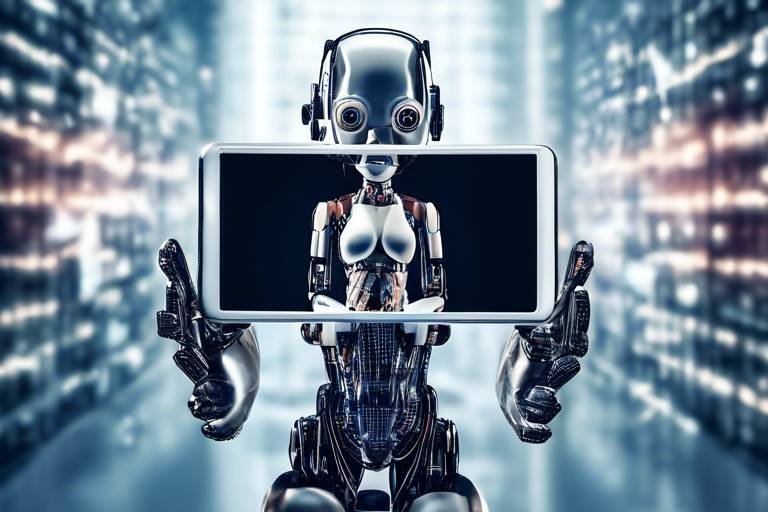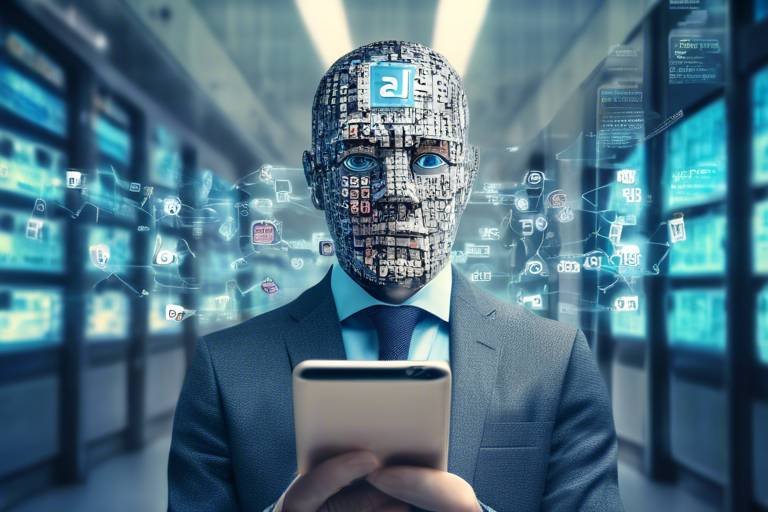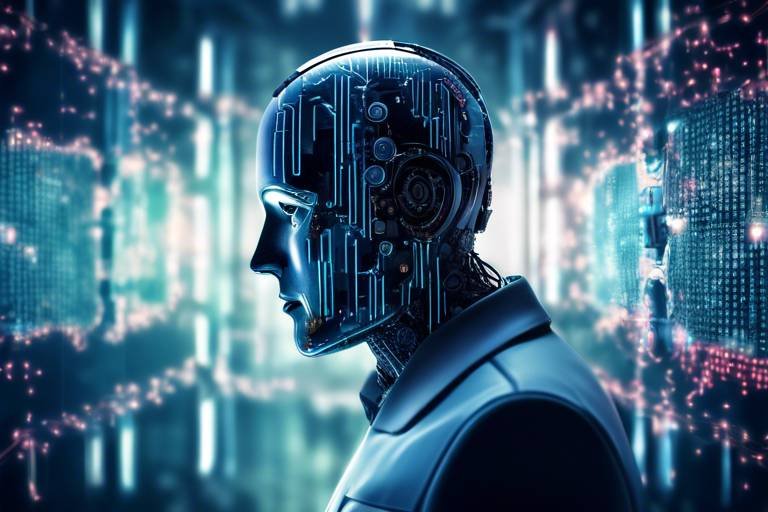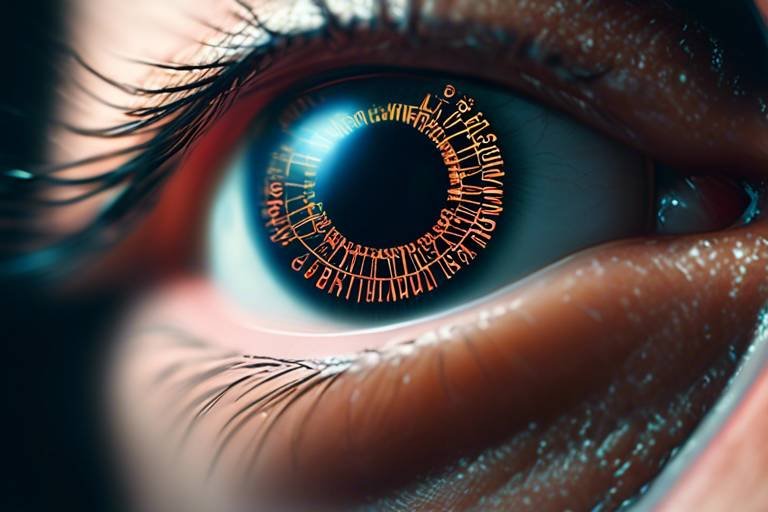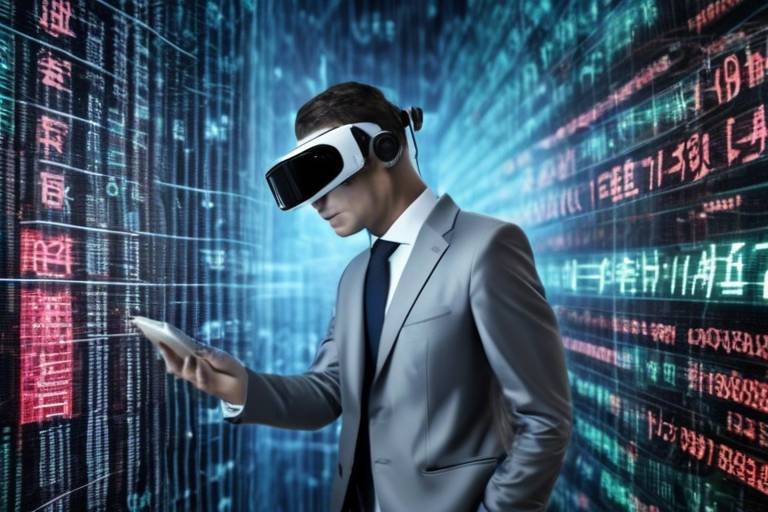Role of AI in Development of Smart Cities
As we step into an era defined by rapid technological advancements, the concept of smart cities is becoming more than just a buzzword; it's a transformative reality. Imagine a city where traffic flows seamlessly, energy is consumed efficiently, and public safety is enhanced through intelligent systems. This is the promise of smart cities, and at the heart of this transformation is artificial intelligence (AI). AI technologies are not only reshaping urban landscapes but are also significantly improving the quality of life for residents. From optimizing infrastructure to enhancing services, AI is paving the way for sustainable urban growth.
The integration of AI in urban planning is akin to giving cities a brain, allowing them to process vast amounts of data and make informed decisions in real-time. This brainpower translates into actionable insights that can tackle various urban challenges, such as traffic congestion, energy consumption, and public safety concerns. As cities grow and evolve, the need for innovative solutions becomes paramount, and AI stands out as a powerful tool in this endeavor.
Let's take a closer look at how AI is revolutionizing urban environments. One of the most significant impacts of AI in smart cities is its ability to analyze data from multiple sources, including sensors, cameras, and social media. This data-driven approach enables city planners and administrators to identify patterns, predict issues, and implement solutions swiftly. For instance, by analyzing traffic flow data, AI can suggest optimal routes for commuters, reducing travel time and minimizing carbon emissions.
Moreover, the role of AI extends beyond just improving transportation. It encompasses a wide range of applications, including energy management, waste disposal, and public safety enhancements. AI-driven systems can monitor energy usage, predict peak demand, and suggest energy-saving measures. In waste management, smart bins equipped with sensors can notify collection services when they are full, ensuring efficient operations and reducing litter in public spaces.
In essence, the role of AI in the development of smart cities is multifaceted, addressing critical urban challenges while fostering a sustainable future. As we delve deeper into this topic, we will explore the various AI technologies that are integral to smart city development, their applications, and the significant benefits they offer to urban environments.
- What are smart cities? Smart cities use technology and data to enhance the quality of life for residents through improved infrastructure and services.
- How does AI contribute to smart cities? AI analyzes data to optimize traffic, manage energy consumption, and enhance public safety, among other applications.
- What technologies are used in smart cities? Key technologies include machine learning, the Internet of Things (IoT), and big data analytics.
- How do smart cities promote sustainability? By using AI to monitor environmental conditions and optimize resource usage, smart cities can reduce their carbon footprints.

Understanding Smart Cities
Smart cities are the future of urban living, where technology and data converge to create environments that enhance the quality of life for everyone. Imagine walking down a street where traffic flows smoothly, energy is used efficiently, and services are tailored to your needs. This is not a distant dream but a reality being shaped by the integration of artificial intelligence (AI) and innovative technologies.
At their core, smart cities leverage advanced technologies to improve connectivity, sustainability, and citizen engagement. These cities utilize a network of sensors, devices, and data analytics to monitor and manage urban systems effectively. The key characteristics of smart cities include:
- Connectivity: A robust communication infrastructure that connects various devices and systems, allowing for real-time data exchange.
- Sustainability: Initiatives aimed at reducing environmental impact, promoting renewable energy, and ensuring efficient resource management.
- Citizen Engagement: Platforms that facilitate interaction between residents and city officials, ensuring that the voices of citizens are heard in decision-making processes.
To truly grasp the essence of smart cities, we need to look at how they operate. For instance, consider a city where streetlights adjust their brightness based on pedestrian activity. This not only enhances safety but also significantly reduces energy consumption. Or think about waste management systems that use sensors to monitor trash levels and optimize collection routes, minimizing fuel use and time.
Moreover, smart cities foster a sense of community. By encouraging citizen participation through apps and online platforms, residents can report issues, suggest improvements, and engage in local governance. This active involvement leads to a more responsive and responsible urban environment.
In summary, smart cities represent a transformative approach to urban development. They harness the power of technology to create more livable, efficient, and sustainable environments. As we continue to explore the role of AI in these cities, it becomes clear that the future of urban living is not just about technology but about enhancing the human experience.

AI Technologies in Smart Cities
In the rapidly evolving landscape of urban development, artificial intelligence (AI) stands as a pivotal force driving the transformation of traditional cities into smart cities. These urban environments are not just about shiny buildings and advanced infrastructure; they are about creating a seamless integration of technology that enhances the quality of life for residents. AI technologies, including machine learning, Internet of Things (IoT), and big data analytics, play crucial roles in this transition, enabling cities to operate more efficiently and sustainably.
At the heart of smart city initiatives lies the concept of connectivity. This connectivity is facilitated by the Internet of Things (IoT), which connects various devices and sensors throughout the city. Imagine a network of smart traffic lights that communicate with vehicles to optimize traffic flow, or smart waste bins that alert collection services when they are full. These innovations are made possible by AI technologies that analyze data in real-time, allowing for data-driven decision-making that enhances urban living.
Moreover, big data analytics serves as the backbone of smart cities, processing vast amounts of information collected from various sources. This data can reveal patterns and trends that help city planners and administrators make informed decisions. For instance, analyzing traffic patterns can lead to better road designs and public transportation routes, ultimately reducing congestion and improving air quality.
Machine learning, a subset of AI, is particularly impactful in optimizing urban services. By learning from historical data, machine learning algorithms can predict future needs and behaviors. For example, cities can use these algorithms to forecast energy consumption based on historical usage patterns, allowing for better resource allocation and energy efficiency. This predictive capability is not just a luxury; it is essential for managing the increasing demands of urban populations.
Additionally, AI technologies are revolutionizing public safety in smart cities. With the implementation of predictive policing and advanced surveillance systems, law enforcement agencies can proactively address potential crime hotspots before issues arise. This not only enhances community safety but also builds trust between residents and law enforcement, fostering a sense of security.
In summary, the integration of AI technologies in smart cities is not merely a trend; it is a necessity for sustainable urban growth. As cities continue to expand, the reliance on AI to optimize services, enhance public safety, and improve overall quality of life will only increase. The future of urban living is bright, with AI leading the charge towards smarter, more connected cities.
- What are smart cities? Smart cities utilize technology and data to improve urban services and quality of life for residents.
- How does AI contribute to smart cities? AI enhances connectivity, optimizes services, and improves decision-making through data analysis.
- What is the role of IoT in smart cities? IoT connects devices and gathers data, enabling real-time responses to urban challenges.
- Can AI improve public safety in cities? Yes, AI technologies like predictive policing enhance safety by addressing potential issues before they escalate.

Machine Learning Applications
Machine learning is revolutionizing the way cities operate, making them more efficient, responsive, and safe. Imagine a bustling urban landscape where traffic flows smoothly, energy consumption is optimized, and public safety is enhanced—all thanks to the power of artificial intelligence. Machine learning algorithms analyze vast amounts of data in real-time, allowing cities to make informed decisions that improve the quality of life for their residents.
One of the most exciting applications of machine learning in smart cities is in traffic management. Traditional traffic systems often rely on fixed schedules and outdated data, leading to congestion and frustration. However, AI-driven traffic management systems can analyze real-time data from various sources, including traffic cameras, sensors, and GPS devices. By predicting traffic patterns and adjusting signal timings dynamically, these systems can significantly reduce congestion. For instance, a city might implement a machine learning model that learns from historical traffic data, adjusting traffic lights in real time to optimize flow during peak hours.
Another critical area where machine learning shines is in public safety enhancements. Cities are increasingly turning to predictive policing models, which utilize historical crime data to identify patterns and predict where crimes are likely to occur. This proactive approach allows law enforcement agencies to allocate resources more effectively, potentially preventing crime before it happens. Additionally, AI-powered surveillance systems can analyze video feeds to detect unusual activities, alerting authorities to potential emergencies before they escalate.
To illustrate the impact of these applications, consider the following table that showcases some specific use cases of machine learning in smart cities:
| Application | Description | Impact |
|---|---|---|
| Traffic Optimization | Real-time analysis of traffic data to adjust signal timings. | Reduced congestion, improved travel times. |
| Predictive Policing | Analyzing crime data to predict and prevent crime. | Increased public safety, optimized police resource allocation. |
| Energy Consumption Prediction | Forecasting energy needs based on usage patterns. | Reduced energy waste, lower costs for residents. |
Moreover, machine learning applications extend to energy consumption as well. By analyzing patterns in energy usage, cities can predict peak demand periods and adjust supply accordingly. This not only helps in managing resources more efficiently but also promotes the use of renewable energy sources. For example, a smart grid powered by machine learning can balance energy loads and integrate solar or wind energy seamlessly, leading to a more sustainable urban environment.
In conclusion, the applications of machine learning in smart cities are vast and varied, transforming urban living into a more efficient and safer experience. As cities continue to evolve, the integration of these advanced technologies will be crucial in addressing the challenges of urbanization and ensuring a sustainable future.
- What is machine learning? Machine learning is a subset of artificial intelligence that enables systems to learn from data and improve their performance over time without explicit programming.
- How does machine learning improve traffic management? It analyzes real-time data to optimize traffic signals and predict congestion, leading to smoother traffic flow.
- Can machine learning enhance public safety? Yes, it can predict crime patterns and assist in proactive policing, helping to prevent crime before it occurs.
- What role does machine learning play in energy management? Machine learning helps forecast energy needs and optimize usage, promoting efficiency and sustainability.

Traffic Management Solutions
In the bustling heart of our urban landscapes, traffic congestion has become a modern-day plague, affecting our daily lives and the environment. But what if I told you that artificial intelligence is stepping in to save the day? AI-driven traffic management solutions are revolutionizing how cities handle the flow of vehicles and pedestrians, transforming chaos into harmony. These systems utilize real-time data analytics to optimize traffic signals, predict congestion points, and even reroute traffic to ensure smoother commutes.
Imagine a city where traffic lights communicate with each other, adjusting their timing based on the current traffic conditions. This is not science fiction; it's happening now! By leveraging machine learning algorithms, cities can analyze historical traffic patterns along with real-time data from various sources, such as cameras and sensors embedded in the road. This clever integration allows for dynamic signal adjustments that can reduce wait times and improve overall traffic flow. For instance, during rush hour, the system can prioritize traffic on major roads while allowing side streets to clear, ensuring that everyone gets to their destination faster.
Moreover, these smart systems are not just reactive; they are proactive. They can predict potential traffic jams before they occur, allowing city planners to implement measures that mitigate congestion. For example, if a major event is happening in the city, the AI can analyze past data and forecast the influx of vehicles, adjusting traffic management strategies accordingly. This predictive capability is akin to having a crystal ball for traffic, allowing cities to stay one step ahead of the game.
But the benefits of AI in traffic management extend beyond mere convenience. By optimizing traffic flow, cities can significantly reduce fuel consumption and lower greenhouse gas emissions. According to a recent study, cities implementing AI-driven traffic solutions have reported an average reduction of 20% in emissions. This is a win-win situation: less congestion means happier commuters and a healthier planet.
In addition to traditional vehicles, AI traffic management systems are also paving the way for the future of mobility, including autonomous vehicles. As self-driving cars become more prevalent, these AI systems will be crucial in ensuring safe and efficient interactions between human-driven and autonomous vehicles. The seamless integration of these technologies promises to create an even smarter urban transport ecosystem.
To give you a clearer picture of how these systems work, here’s a simple breakdown:
| Traffic Management Feature | Description |
|---|---|
| Real-Time Data Analysis | Collects and analyzes data from various sources to adjust traffic signals dynamically. |
| Predictive Traffic Modeling | Forecasts traffic conditions based on historical data and upcoming events. |
| Integration with Autonomous Vehicles | Facilitates communication between AI systems and self-driving cars for safer navigation. |
| Environmental Impact Monitoring | Tracks emissions and fuel consumption, promoting eco-friendly practices. |
In conclusion, the integration of AI in traffic management is not just a technological advancement; it's a necessary evolution for our urban environments. As cities continue to grow and evolve, leveraging these smart solutions will be crucial in addressing the challenges of congestion and environmental sustainability. With AI at the helm, the future of our cities looks brighter and more efficient than ever.
- What is AI-driven traffic management?
AI-driven traffic management refers to the use of artificial intelligence technologies to analyze traffic patterns and optimize the flow of vehicles in urban areas. This includes adjusting traffic signals in real-time based on current conditions.
- How does AI predict traffic congestion?
AI predicts traffic congestion by analyzing historical traffic data and current conditions to forecast potential bottlenecks. This allows for proactive measures to be taken to alleviate congestion before it occurs.
- What are the environmental benefits of AI traffic management?
AI traffic management can significantly reduce fuel consumption and greenhouse gas emissions by optimizing traffic flow, leading to a cleaner and healthier urban environment.

Public Safety Enhancements
In the rapidly evolving landscape of urban living, public safety has emerged as a paramount concern for city planners and residents alike. With the integration of advanced AI technologies, cities are not just becoming smarter; they are also becoming safer. Imagine a world where crime rates are significantly reduced, emergency services respond faster, and communities feel more secure. This is the reality that AI is helping to create.
One of the most impactful applications of AI in public safety is through predictive policing. This innovative approach uses algorithms to analyze historical crime data and identify patterns that could indicate where and when crimes are likely to occur. By leveraging this information, law enforcement agencies can allocate resources more effectively, deploying officers to high-risk areas before incidents happen. This proactive stance not only deters criminal activity but also builds trust within the community.
Moreover, AI-driven surveillance systems have revolutionized how cities monitor public spaces. These systems utilize facial recognition technology and advanced analytics to identify suspicious behavior in real time. For instance, if a person is behaving erratically in a crowded area, the system can alert authorities immediately, allowing for a swift response. While privacy concerns are valid, many cities are implementing these technologies with strict regulations to ensure that citizens' rights are respected.
In addition to crime prevention, AI enhances emergency response systems. When a 911 call is made, AI algorithms can analyze the situation and prioritize calls based on urgency. This means that in a scenario where multiple emergencies occur simultaneously, the most critical situations are addressed first. Furthermore, AI can assist in dispatching the nearest available emergency responders, significantly reducing response times. The difference between a few minutes can be crucial in life-threatening situations, making this technology indispensable.
To illustrate the impact of AI on public safety, consider the following table that outlines some key benefits:
| AI Application | Benefits |
|---|---|
| Predictive Policing | Reduces crime rates by preemptively addressing potential incidents. |
| Real-Time Surveillance | Enhances monitoring capabilities, allowing for quicker responses to suspicious activities. |
| Emergency Response Optimization | Improves response times by prioritizing calls and dispatching resources effectively. |
As cities continue to embrace AI technologies, it’s essential to strike a balance between safety and privacy. Public engagement is crucial in shaping how these systems are implemented. Residents must be informed about the technologies in use and how they contribute to their safety. Transparency fosters trust, and when citizens feel secure in their environment, they are more likely to engage positively with their communities.
In conclusion, the advancements in AI are paving the way for a safer urban future. By harnessing the power of data and technology, cities can not only enhance public safety but also improve the quality of life for all residents. As we look to the future, the integration of AI in public safety will undoubtedly play a critical role in shaping the smart cities of tomorrow.
- How does predictive policing work? Predictive policing uses data analysis to identify potential crime hotspots and allocate law enforcement resources accordingly.
- Are AI surveillance systems safe for privacy? While they offer enhanced security, cities must implement strict regulations to protect citizens' privacy rights.
- What role does AI play in emergency response? AI optimizes emergency response by prioritizing calls and dispatching the nearest responders, improving overall efficiency.

IoT Integration in Urban Infrastructure
The Internet of Things (IoT) is not just a buzzword; it's the backbone of smart cities, weaving a complex web of interconnected devices that communicate and share data seamlessly. Imagine a city where every streetlight, traffic signal, and public utility is equipped with sensors that gather real-time information. This is the reality that IoT brings to urban infrastructure, enhancing efficiency and improving the quality of life for residents. With the integration of IoT, cities can monitor everything from air quality to traffic flow, making data-driven decisions that lead to a more sustainable and livable environment.
At the heart of IoT integration is the ability to collect and analyze vast amounts of data. Sensors placed throughout the city can track environmental conditions, monitor public transportation, and even manage waste collection. For instance, smart bins equipped with sensors can notify waste management services when they are full, optimizing collection routes and reducing fuel consumption. This not only saves time and resources but also leads to cleaner streets and a healthier environment.
Moreover, IoT devices facilitate better connectivity and communication among city services. Consider the following scenarios:
- Smart Traffic Lights: These lights can adapt to real-time traffic conditions, reducing wait times and easing congestion.
- Public Transportation Tracking: Passengers can receive real-time updates on bus and train arrivals, improving their commuting experience.
- Environmental Monitoring: Sensors can track pollution levels and alert authorities about critical conditions, enabling timely responses to environmental hazards.
As cities embrace IoT, they also face challenges related to data privacy and security. With so many devices collecting and transmitting data, protecting that information becomes paramount. Cities must implement robust cybersecurity measures to safeguard residents' privacy while ensuring the reliability of the systems in place. This balance between innovation and security is crucial for the successful deployment of IoT technologies in urban areas.
Furthermore, the integration of IoT in urban infrastructure fosters citizen engagement. When residents have access to real-time data about their environment, they can make informed decisions that impact their daily lives. For example, mobile applications can provide citizens with information about air quality, traffic conditions, and even energy consumption in their homes. This transparency encourages a sense of community and empowers individuals to contribute to sustainability efforts.
In conclusion, IoT integration in urban infrastructure is a game-changer for smart cities. By utilizing interconnected devices and real-time data, cities can enhance operational efficiency, improve public services, and create a more sustainable future. As we continue to innovate and embrace these technologies, the potential for smarter, more connected urban environments is limitless.
Q1: What is IoT, and how does it relate to smart cities?
A1: The Internet of Things (IoT) refers to a network of interconnected devices that can collect and exchange data. In smart cities, IoT technologies enhance urban infrastructure by improving efficiency, sustainability, and the quality of life for residents.
Q2: How do smart bins work?
A2: Smart bins are equipped with sensors that monitor their fill levels. When a bin is full, it sends a notification to waste management services, allowing them to optimize collection routes and schedules, thus reducing costs and environmental impact.
Q3: What are the security concerns related to IoT in smart cities?
A3: The integration of IoT devices raises concerns about data privacy and security. Protecting sensitive information and ensuring the reliability of smart city systems are essential for maintaining public trust.

Sustainability and Environmental Impact
In today’s rapidly evolving urban landscapes, the quest for sustainability has never been more critical. With the population in cities skyrocketing, the demand for resources and services is at an all-time high. This is where artificial intelligence (AI) steps in, acting as a catalyst for transforming our cities into sustainable environments. By harnessing the power of data and innovative technologies, AI is paving the way for smarter, greener urban living. Imagine a city where energy consumption is optimized, waste is managed efficiently, and pollution levels are monitored in real-time. Sounds futuristic, right? Well, it’s happening now!
AI-driven solutions play a pivotal role in monitoring environmental conditions and managing resources more effectively. For instance, cities are now employing AI algorithms to analyze data from various sources, including weather patterns, traffic flows, and energy usage. This data-driven approach allows city planners to make informed decisions that not only enhance the quality of life for residents but also protect the environment. It’s like having a smart assistant that keeps track of everything, ensuring that nothing goes to waste.
One of the most significant contributions of AI to sustainability is in the realm of energy management. AI-powered energy management systems are revolutionizing how cities consume energy. These systems analyze consumption patterns and suggest modifications to reduce waste. For example, they can adjust heating and cooling in buildings based on occupancy, ensuring that energy is not wasted when spaces are unoccupied. This not only lowers costs but also reduces the carbon footprint of urban environments. To illustrate this, consider the following table showcasing the impact of AI on energy savings:
| City | Energy Savings (%) | Carbon Footprint Reduction (tons) |
|---|---|---|
| San Francisco | 20% | 15,000 |
| Barcelona | 25% | 12,000 |
| Singapore | 30% | 10,000 |
Another area where AI shines is in waste management. Traditional waste collection methods often lead to inefficiencies and increased pollution. However, smart waste management systems utilize AI to optimize collection routes and schedules based on real-time data. This means that garbage trucks only pick up waste when bins are full, reducing unnecessary trips and fuel consumption. In fact, cities implementing these systems have reported a significant increase in recycling rates and a decrease in operational costs. It’s like turning trash into treasure, where every piece of waste is accounted for and managed wisely.
Moreover, AI can also help cities monitor air quality and environmental conditions. By using sensors and AI algorithms, cities can gather data on pollution levels and identify sources of contamination. This information is crucial for implementing policies aimed at improving air quality and protecting public health. Imagine a city where you can check the air quality index on your smartphone before heading out, allowing you to make informed decisions about your daily activities. This not only empowers citizens but also encourages them to participate in sustainability initiatives.
In conclusion, the integration of AI into urban planning and management is a game-changer for sustainability. By optimizing energy usage, enhancing waste management, and monitoring environmental conditions, AI is helping cities become more resilient and environmentally friendly. As we continue to embrace these technologies, the vision of sustainable smart cities is not just a dream; it’s becoming our reality. The journey towards sustainability is ongoing, and with AI leading the way, the future looks bright for our urban environments.
- How does AI improve energy efficiency in smart cities? AI improves energy efficiency by analyzing consumption patterns and suggesting optimizations, such as adjusting heating and cooling based on occupancy.
- What role does AI play in waste management? AI optimizes waste collection by analyzing data to determine the best routes and schedules, reducing fuel consumption and increasing recycling rates.
- Can AI help monitor air quality? Yes, AI can gather real-time data on pollution levels, helping cities identify contamination sources and implement policies to improve air quality.

Energy Management Systems
In the quest for creating smart cities, one of the most critical components is the implementation of (EMS). These systems are not just about managing energy; they are about transforming how we consume energy in urban environments. Imagine a city where energy is used efficiently, where waste is minimized, and where renewable sources are maximized. This is not a distant dream; it is becoming a reality thanks to advanced AI technologies.
Energy Management Systems utilize artificial intelligence to analyze data from various sources, allowing cities to optimize their energy consumption. For instance, these systems can predict energy demand based on historical data and real-time usage patterns. This predictive capability is akin to having a personal energy advisor who knows when to save energy and when to use it more efficiently. By integrating data from smart meters, weather forecasts, and even social events, EMS can adjust energy distribution dynamically, ensuring that supply meets demand without overloading the grid.
Furthermore, the integration of renewable energy sources is significantly enhanced by EMS. Cities are increasingly adopting solar panels, wind turbines, and other renewable technologies. However, these sources can be intermittent. Here, AI plays a vital role by forecasting energy production from renewables and adjusting the grid accordingly. This means that on a sunny day, the system can prioritize solar energy, while on a windy day, it can rely more on wind energy. The result? A more resilient and sustainable energy grid.
To illustrate the impact of Energy Management Systems, consider the following table that highlights key benefits:
| Benefit | Description |
|---|---|
| Cost Savings | Reduced energy costs for consumers and municipalities through optimized usage. |
| Environmental Impact | Lower carbon emissions by maximizing the use of renewable energy sources. |
| Reliability | Improved energy reliability and stability of the grid. |
| Data-Driven Decisions | Enhanced decision-making through real-time data analytics. |
Moreover, the role of EMS extends to waste management and transportation systems. For example, smart buildings equipped with EMS can monitor their energy use in real-time, adjusting heating, cooling, and lighting systems based on occupancy and usage patterns. This not only reduces energy waste but also enhances the comfort of residents. In public transportation, EMS can optimize routes and schedules based on energy efficiency, further contributing to a sustainable urban ecosystem.
As cities continue to grow, the need for sustainable energy solutions becomes increasingly urgent. Energy Management Systems, powered by AI, offer a pathway to achieving this sustainability. They are not just tools for energy efficiency; they are essential components of the smart city infrastructure, ensuring that urban environments can thrive without compromising the health of our planet.
- What is an Energy Management System?
An Energy Management System is a system that uses technology, including AI, to monitor and optimize energy consumption in urban environments. - How does AI improve Energy Management Systems?
AI analyzes data from various sources to predict energy demand and optimize the use of renewable energy sources. - What are the benefits of implementing EMS in smart cities?
Benefits include cost savings, reduced environmental impact, increased reliability, and data-driven decision-making. - Can EMS help in waste management?
Yes, EMS can optimize energy use in waste management systems, enhancing overall efficiency.

Waste Management Innovations
In the bustling landscape of modern cities, waste management is often an overlooked yet crucial aspect of urban living. With populations soaring and consumption rates skyrocketing, traditional waste disposal methods are no longer sufficient. Enter AI-driven waste management innovations, which are revolutionizing how cities handle their refuse and recycling. These smart solutions not only enhance efficiency but also contribute to creating cleaner and more sustainable urban environments.
One of the most exciting advancements in waste management is the implementation of smart bins. These bins are equipped with sensors that monitor their fill levels in real-time. When a bin reaches its capacity, it sends an alert to waste collection services, optimizing collection routes and schedules. This not only saves time and fuel but also reduces the carbon footprint associated with waste collection. Imagine a city where garbage trucks only travel when necessary—this is the future that AI is helping to create!
Moreover, AI technologies can analyze data from these smart bins to predict waste generation patterns. By understanding when and where waste is likely to accumulate, cities can proactively deploy resources to manage waste more effectively. For instance, if data shows that a particular area generates more waste during weekends, collection services can adjust their schedules accordingly. This predictive approach ensures that resources are allocated efficiently, minimizing waste overflow and keeping streets cleaner.
Another innovative solution is the use of robotics and AI algorithms in sorting facilities. Traditional recycling methods often rely on manual labor, which can be inefficient and prone to error. However, AI-powered robots can sort materials with remarkable precision, identifying recyclables and contaminants faster than human workers. This not only increases recycling rates but also reduces contamination, ensuring that recyclable materials are processed correctly. The table below illustrates the difference in efficiency between traditional sorting methods and AI-enhanced systems:
| Method | Sorting Speed (items/min) | Contamination Rate (%) |
|---|---|---|
| Traditional Manual Sorting | 20 | 15 |
| AI-Powered Sorting | 100 | 5 |
Additionally, AI can help in the development of waste-to-energy technologies. These systems convert waste materials into usable energy, addressing two critical issues: waste disposal and energy generation. By utilizing AI to optimize the combustion process, cities can significantly reduce the volume of waste sent to landfills while simultaneously producing renewable energy. This not only promotes sustainability but also fosters energy independence for urban areas.
Furthermore, public engagement plays a vital role in successful waste management. AI-driven applications can facilitate community involvement by educating residents about recycling practices and encouraging responsible waste disposal. For instance, gamified apps can reward users for proper recycling habits, turning waste management into a fun and engaging activity. By fostering a culture of sustainability, cities can ensure that waste management innovations are supported by the community.
In conclusion, the integration of AI in waste management is not just a trend; it’s a necessity for the future of urban living. As cities evolve into smart environments, these innovations will play a pivotal role in enhancing operational efficiency, promoting sustainability, and ultimately improving the quality of life for residents. With the power of AI at our disposal, the dream of cleaner, smarter cities is within reach.
- What are smart bins? Smart bins are waste containers equipped with sensors that monitor fill levels and send alerts for collection when full.
- How does AI improve recycling rates? AI improves recycling rates by using robots to sort materials more efficiently and accurately than manual labor.
- Can AI help reduce waste contamination? Yes, AI-powered sorting systems can significantly reduce contamination rates by accurately identifying recyclables and contaminants.
- What is waste-to-energy technology? Waste-to-energy technology converts waste materials into usable energy, helping to reduce landfill waste while generating renewable energy.
Frequently Asked Questions
-
What is a smart city?
A smart city is an urban area that uses technology and data to improve the quality of life for its residents. This includes enhancing infrastructure, promoting sustainability, and fostering citizen engagement through innovative solutions.
-
How does AI contribute to smart city development?
AI plays a crucial role in smart city development by optimizing services and infrastructure. Technologies like machine learning, IoT, and big data analytics help cities manage traffic, enhance public safety, and improve energy efficiency.
-
What are some applications of machine learning in smart cities?
Machine learning can be applied in various ways, such as optimizing traffic management systems to reduce congestion, predicting energy consumption patterns, and enhancing public safety through data analysis.
-
How do AI-driven traffic management solutions work?
AI-driven traffic management systems analyze real-time data from various sources, such as cameras and sensors, to optimize traffic flow, reduce delays, and enhance transportation efficiency in urban areas.
-
What role does IoT play in smart cities?
The Internet of Things (IoT) connects devices and gathers data across urban environments, enabling real-time monitoring and management of city services, from waste collection to energy usage.
-
How can AI help with sustainability in smart cities?
AI contributes to sustainability by monitoring environmental conditions, optimizing energy consumption, and promoting renewable energy sources, ultimately helping cities reduce their carbon footprints.
-
What are energy management systems in smart cities?
AI-powered energy management systems are designed to optimize energy usage in urban areas, ensuring efficient consumption and encouraging the integration of renewable energy sources to create sustainable environments.
-
How does AI improve waste management in urban areas?
Smart waste management systems utilize AI to analyze data on waste generation and collection, improving efficiency and recycling rates, which leads to cleaner and more sustainable cities.









